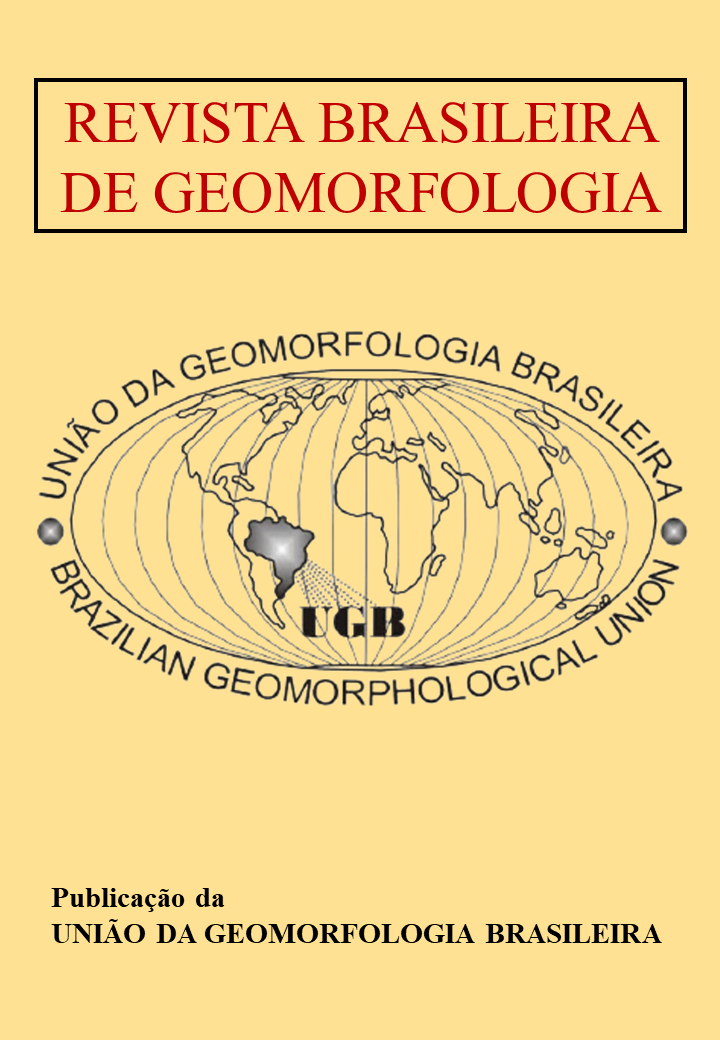Lithostructural control of the relief in the eastern sector of the Parnaíba sedimentary basin (Ibiapaba Plateau), Northeast Brazil
DOI:
https://doi.org/10.20502/rbgeomorfologia.v25i4.2589Palavras-chave:
Monoclinal structures, Glint, Borborema Province, Brazilian semi-aridResumo
Cartographic updates of the geological area between the Parnaíba and Borborema Provinces made it possible to provide details in the interpretation of the lithostructural control of the Ibiapaba Plateau and surroundings. The article aims to interpret regional morphostructural aspects based on bibliographic review, fieldwork and GIS interpretations. The area is characterized by an asymmetrical plateau with a continuous glint-type escarpment (≈800 m), supported by Paleozoic sandstones overlying the Precambrian basement. In the surroundings, flat surfaces predominate (≈200m), whose morphologies vary according to the lithologies. From a structural point of view, the Transbrasilian Lineament (LT) constitutes the main regional tectonic divide, influencing the behavior of the escarpment and the reverse. In lithological terms, the sandstones and conglomerates of the Serra Grande Group stand out, responsible for maintaining the top of the plateau, the Cabeças Formation and lateritic coverings, which support small tabular plateaus within the sedimentary basin, in addition to the granitoids, quartzites and orthogneisses that support residual reliefs in the basement. Considering a regional geomorphological evolution associated with Cretaceous uplifts of rift and post-rift phases, the detailing of lithostructural aspects is fundamental to explain the relationship of differential erosion in the current regional morphology.
Downloads
Downloads
Publicado
Como Citar
Edição
Seção
Licença

Este trabalho está licenciado sob uma licença Creative Commons Attribution-NonCommercial 4.0 International License.
Autor(es) conservam os direitos de autor e concedem à revista o direito de primeira publicação, com o trabalho simultaneamente licenciado sob a Licença Creative Commons Attribution que permite a partilha do trabalho com reconhecimento da autoria e publicação inicial nesta revista.










